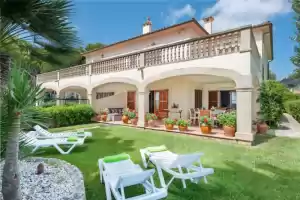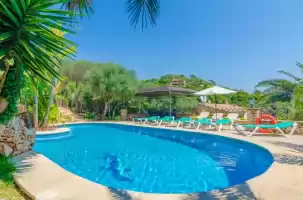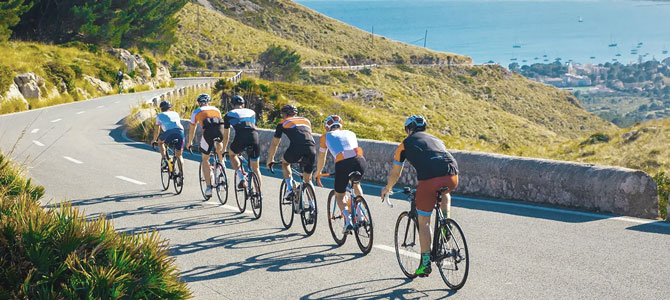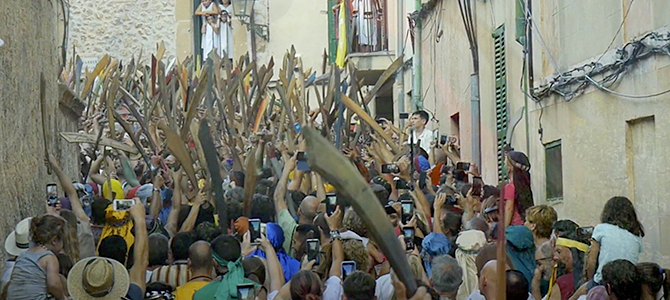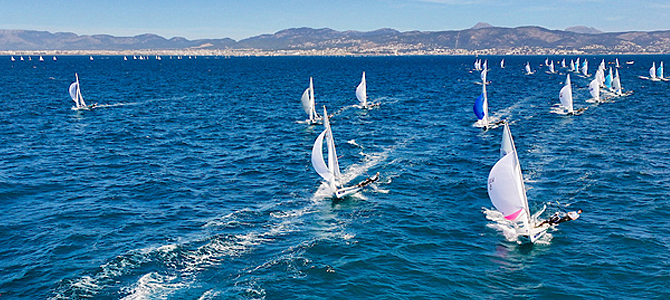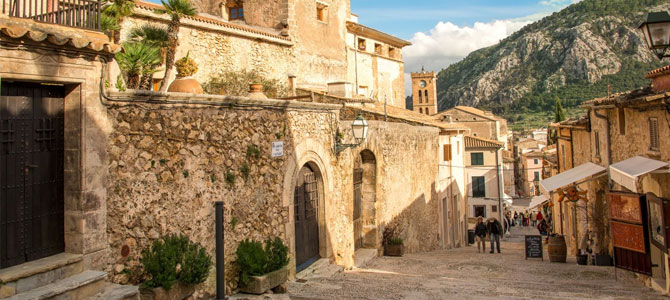Just a few kilometres south of Mallorca lies one of the best-preserved treasures in the Mediterranean: the island of Cabrera. This archipelago, made up of a main island and 18 islets, was declared a Maritime-Terrestrial National Park in 1991. In 2019, its protected surface area was significantly extended, reaching 90,800 hectares, making it the largest marine national park in the western Mediterranean. This area is home to exceptional biodiversity, with a wide variety of marine flora and algae.
When is the best time to go
Cabrera Island can be visited all year round, but each season offers a different experience:
- Spring (April-June): Probably the best time. The island is covered with wild flowers, temperatures are pleasant for hiking and there are fewer visitors than in summer. It is also an excellent time for migratory bird watching.
- Summer (July-September): This is the peak season, with more visitors and excursions available. The heat can be intense for long walks, but conditions are ideal for snorkelling and swimming in the clear waters.
- Autumn (October-November): Similar to spring, with moderate temperatures and fewer visitors. The sea is still pleasant for swimming until the beginning of October.
- Winter (December-March): Excursions are very limited during this time and weather conditions can be unpredictable, with strong winds making navigation difficult.
Where is Cabrera Island and how to get there?
The Cabrera archipelago is located about 10 kilometres south of Mallorca, in the Balearic archipelago, off the coast of Colònia de Sant Jordi. Getting to Cabrera requires some planning, as access is strictly regulated in order to preserve its conservation status.
There are mainly two options for visiting this paradise:
1. Organised excursions from Mallorca
The most common way to visit Cabrera is by organised sea excursions departing mainly from:
- Colònia de Sant Jordi: This is the closest and most popular departure point. Several authorised ferry companies offer daily trips during the tourist season (mainly from April to October). The trip takes approximately 30-45 minutes.
- Porto Petro: Some excursions also depart from this port located on the southeast coast of Mallorca, although the journey is a little longer (about 1 hour).
- Palma de Mallorca: During the high season, it is possible to find some departures from the Balearic capital, although the journey is considerably longer (approximately 2.5-3 hours).
2. Private vessel
If you have your own boat, you can also visit Cabrera, but you must request a special permit in advance from the National Park administration. There are a limited number of anchoring buoys available in the natural harbour, and it is completely forbidden to anchor over the Posidonia oceanica meadows to avoid damaging this valuable ecosystem.
History of the Island: from Napoleonic prison to national park
The history of Cabrera is as rich and varied as its biodiversity. The first signs of human presence date back to the Talayotic period (around 1000 BC), although it was during the Roman period when the island began to have a certain strategic importance.
During the Middle Ages and part of the Modern Age, Cabrera became a perfect refuge for pirates. This fact led to the construction, in the 14th century, of the castle that still crowns the island today.
One of the darkest chapters in Cabrera’s history took place between 1809 and 1814, when the island was used as a prison for thousands of French soldiers captured during the Spanish War of Independence.
For much of the 20th century, Cabrera was under military control, which paradoxically helped to preserve its natural state. Finally, in 1991 the Cabrera Archipelago Maritime-Terrestrial National Park was declared, making it the first specifically maritime-terrestrial national park in Spain (although national parks with marine areas had existed before, such as Doñana since 1969).
What to see on the island of Cabrera
Although small in size, Cabrera has many points of interest:
- Cabrera Castle: Perched atop a hill overlooking the natural harbour, Cabrera Castle is the island’s most emblematic monument. This fortress, built in the 14th century and rebuilt in the 18th century, served as a strategic lookout point. You can reach it via a steep but well-conditioned path that starts from the port (approximately 20 minutes of ascent). From its walls you will enjoy spectacular panoramic views of the entire archipelago.
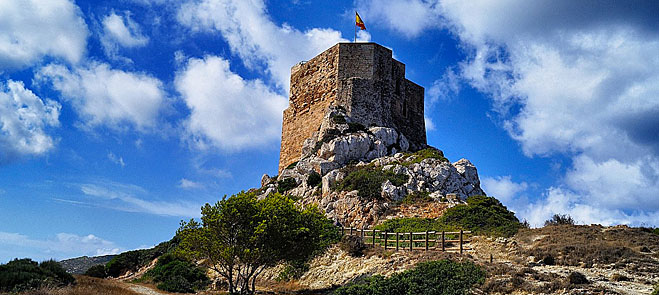
- The Natural Harbour: The port of Cabrera is a deep, sheltered natural bay that has served as a refuge for sailors since time immemorial. Nowadays, this port is the nerve centre of the island, where the few infrastructures available are located: the jetty, the visitor centre, a small canteen and the facilities of the national park.
- Es Celler Interpretation Centre: Located in an old building known as “Es Celler” (the cellar), this interpretation centre is a must to understand the natural and historical wealth of Cabrera. Through information panels, models and interactive exhibitions, you can learn in depth about the park’s ecosystems, its history, geology and the species that inhabit it.
- The Blue Cave (Sa Cova Blava): One of Cabrera’s most spectacular natural treasures is the famous Blue Cave. This marine grotto, only accessible by sea, owes its name to the extraordinary cobalt blue colour that its waters acquire when sunlight penetrates through the underwater entrance. Most of the organised excursions include a stop at this cave so that you can bathe in its luminescent waters and enjoy this unique natural spectacle.

- Ensiola Lighthouse: Situated at the southern tip of the main island, the Ensiola Lighthouse stands on impressive cliffs over 100 metres high and offers some of the most spectacular views in the archipelago. To reach it requires a walk of about 3 hours (round trip) from the harbour, but the effort is rewarded with breathtaking scenery.
Must-see hiking routes and viewpoints
Cabrera is an ideal destination for hikers, with several signposted trails.
Main trails:
- Route to the Castle: The most popular and accessible trail. With a length of just 1 km (20-30 minutes of ascent).
- Ensiola Lighthouse Trail: This medium-difficulty trail runs from north to south across the island. Approximately 6 km one way (12 km round trip), it takes about 4 hours to complete.
- L’Imperial Peninsula circular route: This circular route of about 5 km will allow you to explore the western peninsula of the main island.
- Sendero de la Miranda: A short but steep route that leads to one of the best viewpoints on the island.
Snorkelling and diving
The crystal clear waters surrounding Cabrera are home to an exceptional marine biodiversity:
- Posidonia oceanica meadows: This marine plant forms extensive underwater “meadows” considered the lungs of the sea. Those of Cabrera are among the best preserved in the whole Mediterranean.
- Mediterranean coralligenous: In the deepest areas, communities of red coral, gorgonians and sponges proliferate.
- Great diversity of fish: from the ubiquitous obladas and salps to more elusive species such as groupers, corvinas or barracudas.
Best snorkelling spots
- Port of Cabrera: Even in the main bay you will be able to observe shoals of fish.
- Cala Santa Maria: This small cove near the port offers calm waters and rocky bottoms with abundant marine life.
- The Blue Cave: In addition to its spectacular play of light, its transparent waters allow you to observe numerous species.
- L’Olla: This small inlet has a varied seabed where sand and rocks converge.
Scuba diving
For certified divers, Cabrera represents a unique experience. Diving is regulated and requires prior authorisation, only being allowed in specific areas and with authorised operators. There are several companies in Mallorca that organise guided dives at selected points in the park.
Guided tours and organised excursions
Types of tours available
- Basic day trip: Includes return sea transport from Mallorca, free time to explore the harbour and the castle, and usually a stop at the Blue Cave.
- Full tour with lunch included: Similar to the previous one but with more time on the island and lunch included.
- Snorkelling tour: With stops at various underwater points of interest.
- Themed excursions: Focusing on photography, birdwatching or the history of the island.
- Diving dives: For certified divers.

Access limitations
There is a strict daily quota of visitors to preserve the island’s ecosystem:
- In high season (June-September), the limit is approximately 200-250 visitors per day.
- In low season, this number is reduced to about 100-150 visitors.
- The maximum length of stay for day visitors is approximately 4-6 hours.
- The number of private boats that can anchor in the natural harbour is also limited to between 40 and 50 places, depending on the season.
Visiting Cabrera is a way of discovering what the Mediterranean was like before the arrival of mass tourism. A quiet, natural and almost untouched place, where you can still enjoy the sea and nature in its purest form. It is a different experience, ideal for those who are looking to disconnect and connect with the essential.

